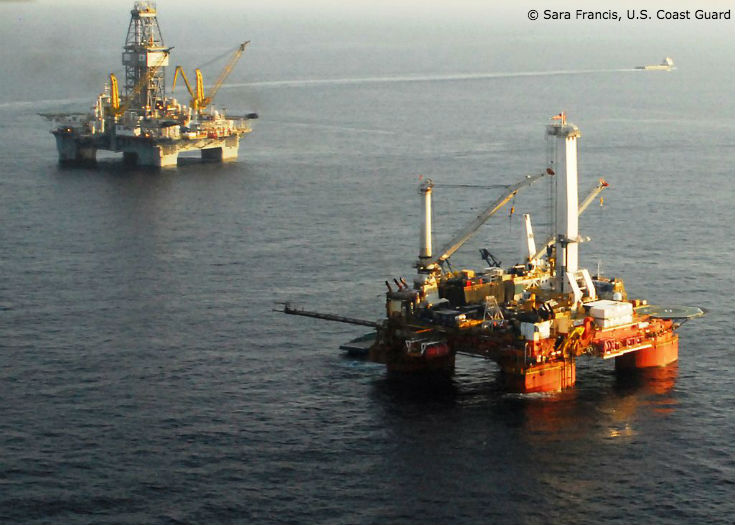Remembering the Victims and Survivors of Deepwater Horizon
Published by Ocean Conservancy

Like many Gulf Coast people, I too had a loved one working on an oil rig the day the Deepwater Horizon exploded. In his first job with the oil industry, my stepdad was working IT on a rig. My mom and I had been glad he got the job as he had been laid off during the recession, but that day I was frantic. Stuck on an airplane when I heard the news, I wracked my brain: What rig was he on? Was he okay? It was two, painful hours before we landed, and I could finally call my mom.
Luckily, my stepdad was safe. I breathed a sigh of relief.
But that day in 2010, I’m sure tens of thousands of families went through the same worry, wondering if their loved ones were safe.
For many of us, then, the new movie Deepwater Horizon, which chronicles the last few hours aboard the rig, may be hard to watch. The movie creates an overwhelming sense of fear, anger and frustration as cement tests are ignored, pressure tests are misread and concerns over the integrity of the oil well are overlooked for the sake of staying on schedule.
The film points to the oil and gas industry’s overall lack of commitment to safety as the root cause of the disaster, just as the National Oil Spill Commission found in their 2011 report to the President. In the movie, before the first explosion even happens, we see that the phones don’t work, fire alarms need new batteries and even the air conditioning is going out. Mark Wahlberg, portraying chief electronic technician Mike Williams, calls out this climate of risk when he tells BP well site leader Donald Vidrine, played by John Malkovich, that it seems BP is “running out of gas while landing the plane.” The Deepwater Horizon was behind schedule, and BP was intent on finishing the job quickly so the rig could move onto another well site.
Once the blowout occurs, chaos ensues because the rig crew was not properly trained on how to respond to such a disaster. Captain Curt Kuchta screams at dynamic positioning officer Andrea Fleytas for sounding a distress signal. Transocean rig boss Jimmy Harrell is half-blinded in the first explosion by falling insulation and glass and struggles to regain command of his rig. Ultimately, Vidrine, along with his partner Robert Kaluza, were both charged with 22 counts of manslaughter, all of which were eventually dropped. In real life, many feel that Vidrine and Kaluza were simply the fall guys for BP as the key decisions that led to the disaster ultimately came from their bosses in Houston. The movie emphasizes this sentiment by portraying Vidrine as a vulgar character, a symbol of BP’s negligence. But where Vidrine and Kaluza were found at fault, 11 heroic men had worked furiously to try to prevent the disaster.
Movie director Peter Berg said during a National Public Radio interview that one of his motivations for making the movie was to recognize their dedication in the face of danger. It’s no coincidence that most of the 11 men who died were members of the drilling crew. “They stayed at their workstations,” Berg told NPR, “when they could have jumped off the rig onto the lifeboats. They stayed on the rig and attempted very hard and courageously to try and prevent that blowout. And they died trying to prevent it.”
Eleven families lost a loved one that day. But we know it could have been a loved one from any of tens of thousands of families. Six years later, as we work to restore the Gulf from the BP oil disaster, it’s important that we keep this loss as part of our perspective. Because even though we now have an opportunity to make the Gulf even healthier than it was in 2010, we paid a dear price for this chance. We owe it to the victims and survivors of the disaster to get Gulf restoration right.
Read the full article at: http://blog.oceanconservancy.org/2016/10/01/remembering-the-victims-and-survivors-of-deepwater-horizon/


